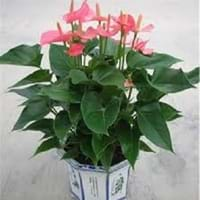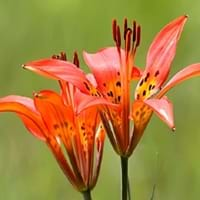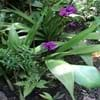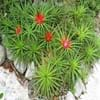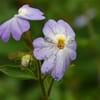Life Span
Perennial
Perennial
Type
Tender Perennial
Bulb or Corm or Tuber
Origin
Mexico, Latin America and the Caribbean, Central America, South America
Northeastern United States, Mid-Atlantic United States, Southeastern United States, North-Central United States, Central United States, South-Central United States, Western United States, Southwestern United States, Texas, Canada
Types
Not Available
western red lily
Habitat
gardens, Near ponds
High elevation, Hill prairies, Open grasslands
USDA Hardiness Zone
10-11
3-8
Habit
Spreading
Upright/Erect
Minimum Width
Not Available
Flower Color
Not Available
Dark Red, Orange Red
Flower Color Modifier
Not Available
Bicolor
Fruit Color
Not Available
Yellow green, Sandy Brown
Leaf Color in Spring
Green, Dark Green
Light Green
Leaf Color in Summer
Green, Dark Green
Light Green
Leaf Color in Fall
Green, Dark Green
Several shades of Green
Leaf Color in Winter
Green, Dark Green
Light Green
Leaf Shape
Heart-shaped
Long linear and narrow
Plant Season
Spring, Summer, Fall, Winter
Summer
Sunlight
Partial Sun, Partial shade
Full Sun, Partial Sun, Partial shade
Type of Soil
Loam
Clay, Loam, Sand
The pH of Soil
Neutral
Neutral
Soil Drainage
Well drained
Well drained
Bloom Time
Indeterminate
Summer, Late Summer
Tolerances
Drought
Drought
Where to Plant?
Ground, Pot
Ground, Pot
How to Plant?
Offsets, Seedlings
Bulbs
Plant Maintenance
Medium
Medium
Watering Requirements
Keep ground moist, Requires consistently moist soil
Keep the Soil well drained
In Summer
Lots of watering
Lots of watering
In Spring
Moderate
Moderate
In Winter
Average Water
Average Water
Soil Type
Loam
Clay, Loam, Sand
Soil Drainage Capacity
Well drained
Well drained
Sun Exposure
Partial Sun, Partial shade
Full Sun, Partial Sun, Partial shade
Pruning
Remove damaged leaves, Remove dead branches, Remove dead leaves
Remove damaged leaves, Remove dead branches, Remove dead leaves
Fertilizers
All-Purpose Liquid Fertilizer
Acidic Fertilizer, All-Purpose Liquid Fertilizer
Pests and Diseases
Aphids, Mealybugs, Soft scales
Gray mold, Lily Beetle
Plant Tolerance
Drought
Drought
Flower Petal Number
Not Available
Single
Foliage Texture
Coarse
Medium
Foliage Sheen
Glossy
Matte
Attracts
Butterflies, Hummingbirds, Not Available
Birds, Hummingbirds
Allergy
Toxic
poisonous to cats
Aesthetic Uses
Mixed Border, Ornamental use, Showy Purposes, Wild gardens
Borders, Cottage Garden, Ornamental use, Wild gardens
Beauty Benefits
No Beauty Benefits
Not Available
Environmental Uses
Air purification
Air purification
Medicinal Uses
No Medicinal Use
Not Available
Part of Plant Used
Not Applicable
Not Available
Other Uses
Not Available
bulb used as starch, Unknown
Used As Indoor Plant
No
Yes
Used As Outdoor Plant
Yes
Yes
Garden Design
Bedding Plant, Container, Cutflower, Foundation, Houseplant, Mixed Border, Tropical
Feature Plant, Mixed Border, Wildflower
Botanical Name
ANTHURIUM andraeanum 'Otazu'
LILIUM philadelphicum
Common Name
Flamingo Lily, Tailflower
Philadelphia Lily, Wood Lily
In Hindi
flamingo lily
wood lily
In German
flamingo lily
Lilium philadelphicum
In French
flamingo lily
Lilium philadelphicum
In Spanish
flamingo lily
lirio de madera
In Greek
flamingo lily
ξύλο κρίνος
In Portuguese
flamingo lily
wood lily
In Polish
flamingo lily
lilia drewna
In Latin
flamingo lily
wood lily
Phylum
Tracheobionta
Magnoliophyta
Class
Liliopsida
Liliopsida
Clade
Monocotyledonous
Angiosperms, Monocots
Tribe
Not Available
Not Available
Subfamily
Not Available
Lilioideae
Number of Species
Not Available
Not Available
Difference Between Flamingo Lily and Wood Lily
If you are confused whether Flamingo Lily or Wood Lily are same, here are some features about those plants to help you choose better. Many people think that these two plants have the same characteristics, but one can see Flamingo Lily and Wood Lily Information and learn more about it. Fertilizers required for proper growth of Flamingo Lily are All-Purpose Liquid Fertilizer, whereas for Wood Lily fertilizers required are Acidic Fertilizer and All-Purpose Liquid Fertilizer. Hence, one should know the basic difference between Flamingo Lily and Wood Lily if you are planning to have them in your garden to enhance its beauty.
<
Flowering PlantsImportance of Flamingo Lily and Wood Lily
Want to have the most appropriate plant for your garden? You might want to know the importance of Flamingo Lily and Wood Lily. Basically, these two plants vary in many aspects. Compare Flamingo Lily and Wood Lily as they differ in many characteristics such as their life, care, benefits, facts, etc. Every gardener must at least have the slightest clue about the plants he wants to plant in his garden. Compare their benefits, which differ in many ways like facts and uses. The medicinal use of Flamingo Lily is No Medicinal Use whereas of Wood Lily is Not Available. Flamingo Lily has beauty benefits as follows: No Beauty Benefits while Wood Lily has beauty benefits as follows: No Beauty Benefits.
Compare Facts of Flamingo Lily vs Wood Lily
How to choose the best garden plant for your garden depending upon its facts? Here garden plant comparison will help you to solve this query. Compare the facts of Flamingo Lily vs Wood Lily and know which one to choose. As garden plants have benefits and other uses, allergy is also a major drawback of plants for some people. Allergic reactions of Flamingo Lily are Toxic whereas of Wood Lily have poisonous to cats respectively. Having a fruit bearing plant in your garden can be a plus point of your garden. Flamingo Lily has no showy fruits and Wood Lily has no showy fruits. Also Flamingo Lily is not flowering and Wood Lily is not flowering . You can compare Flamingo Lily and Wood Lily facts and facts of other plants too.
